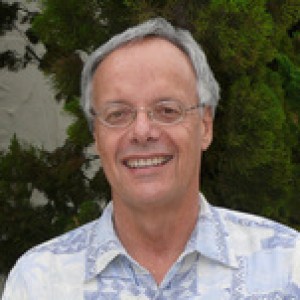If you are like me, you feel some sort of impending disaster awaits us with climate change. Clearly, something must be done to avert this disaster, but instead the deniers are out in force attempting to discredit the conclusions of 97% of climate scientists. Reasonable people are outraged by climate change deniers, but in truth, even if the deniers disappeared tomorrow, we would still be hard-pressed to solve the climate problem.
As an environmental engineer with the Navy, I used to lecture on climate change to audiences in the government and local communities. My lectures focused on the inexorable rise of carbon dioxide in the atmosphere at a rate of two parts per million every year. Right now, the atmospheric concentrations of carbon dioxide exceed 400 ppm, which may be compared to 280 ppm at the dawn of the Industrial Revolution. The current levels of CO2 haven’t been seen on this planet in millions of years.
Ever since the early 1800’s, scientists have known that carbon dioxide triggers a greenhouse effect, a warming of the atmosphere. Scientists now use models to calculate the extent of warming and its concurrent effects such as changes in precipitation patterns, sea level rise, acidification of the oceans, and so on. Some of our leading scientists insist that we must reduce atmospheric levels back to 350 ppm to avert disaster (see their web site here).
The fundamental problem with the build-up of greenhouse gases in the atmosphere is that it is directly related to our modern civilization. The primary greenhouse gas, carbon dioxide, is produced through combustion of fossil fuels such as oil, natural gas, and coal. Our power plants, automobiles, aircraft, and other modern fuel combustors continually pump this gas into our atmosphere. As long as we continue business as usual with fossil fuels, we will never reduce carbon dioxide in the atmosphere. Worse still, even a drastic reduction in use of fossil fuels will still add unacceptable levels of carbon dioxide in the air.
This is the logic trail that I have developed over the years. My conclusion has been that we are doomed … that the human species will become extinct within a few short centuries.
But now I see a glimmer of hope … actually more than a glimmer of hope. And that hope has the awkward name of Community Choice Aggregation (CCA). For the first time, there is something that you and I can do to stop climate change in its tracks.
What is Community Choice Aggregation?
CCA is a process whereby a community takes control of its use of energy. California passed Assembly Bill 117 in 2002 whereby communities are allowed to “aggregate” their energy loads and purchase clean sources of energy such as solar, wind, hydroelectric, and so on. This has already been accomplished in Sonoma and Marin Counties in Northern California, and Lancaster has just embarked on a similar program in Southern California.
So how does this work? Think of Southern California Edison as an entity that purchases energy from multiple sources, mostly fossil fuel power plants but also some renewable sources. Edison then distributes this energy as electricity to our homes and businesses. On a monthly basis, Edison bills us for this electricity based on our consumption profile.
With CCA we separate out the energy purchasing from energy distribution. The community sets up a governmental agency to directly purchase the energy. It is then distributed by Edison who also bills us based on our use. We buy the power, and Edison continues to deliver it.
Here is a utility bill from Marin Clean Energy (MCE) showing how it works. Notice that their utility, Pacific Gas and Electric (PG&E), provides the bill but separately shows the cost of “electric delivery” (PG&E’s charges) and “electric generation” (MCE’s charges). In this manner PG&E receives the money it needs to maintain the electric lines while MCE receives the money it needs to buy power from diversified suppliers. The California Public Utilities Commission oversees the rates to make sure that PG&E, MCE, and the consumers are treated fairly.
Channel Islands Clean Energy
Say that Ventura County [in California] establishes a CCA and that all its cities agree to participate. For argument’s sake, let’s say that the new CCA is known as Channel Islands Clean Energy. Once the arrangement is blessed by the Public Utilities Commission, then all customers in the area will be automatically enrolled in Channel Islands Clean Energy unless they choose to opt out and return to full service by Southern California Edison.
Based on the experiences of Sonoma, Marin, and Lancaster, Channel Islands Clean Energy customers can expect to see a 5% savings in their electricity bill, even with a 5% increase in use of sustainable energy. If the customer chooses to go 100% renewable (see the term “Deep Green” in the MCE bill above) then his/her monthly bill will only increase by about $5.
Based on the experiences of Sonoma and Marin, Channel Islands Clean Energy may accrue as much as $1 million per month to be plowed into local energy projects that will further increase our sustainable portfolio. With the on-going reduction in renewable energy costs, we could virtually eliminate our use of fossil fuels within a decade.



